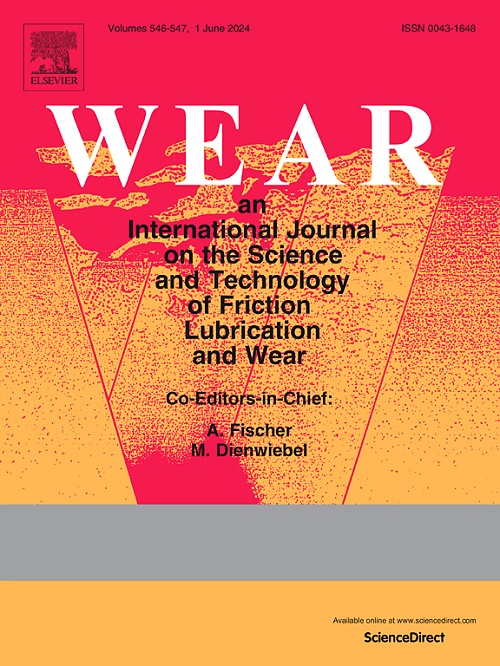Cavitation erosion of a novel high silicon brass: An EBSD study of a copper-based alloy with hexagonal lattice structure
IF 5.3
1区 工程技术
Q1 ENGINEERING, MECHANICAL
引用次数: 0
Abstract
Cavitation erosion of a lead-free silicon brass (CuZn10Si5Al1) was studied employing ultrasonic cavitation tests. The new alloy exhibits a remarkable resistance against cavitation in comparison with resistant copper-based alloys previously reported by the authors under identical test conditions. In contrast to most copper-based alloys, the tested material mainly consists of a single hexagonal close-packed phase with a negligible fraction of face-centered cubic phase. Electron backscatter diffraction was employed to examine plastic deformation induced by cavitation. This evaluation revealed a strong influence of the grain orientation on the local cavitation resistance. It is noticeable during the incubation stage that, while grain surfaces oriented nearly parallel to the basal plane exhibit visible deformation resulting from twinning, grains with surfaces oriented nearly parallel to prism planes show weak traces of plastic deformation and very low damage induced by cavitation. Additionally, grain boundaries located between grains subjected to large differences in deformation were found to be mostly resistant to cracking or void formation. It is concluded that high crystal anisotropy related to the single-phase hexagonal structure found in the CuZn10Si5Al1 alloy promotes a microstructure with exceptional resistance to cavitation erosion.
求助全文
约1分钟内获得全文
求助全文
来源期刊

Wear
工程技术-材料科学:综合
CiteScore
8.80
自引率
8.00%
发文量
280
审稿时长
47 days
期刊介绍:
Wear journal is dedicated to the advancement of basic and applied knowledge concerning the nature of wear of materials. Broadly, topics of interest range from development of fundamental understanding of the mechanisms of wear to innovative solutions to practical engineering problems. Authors of experimental studies are expected to comment on the repeatability of the data, and whenever possible, conduct multiple measurements under similar testing conditions. Further, Wear embraces the highest standards of professional ethics, and the detection of matching content, either in written or graphical form, from other publications by the current authors or by others, may result in rejection.
 求助内容:
求助内容: 应助结果提醒方式:
应助结果提醒方式:


